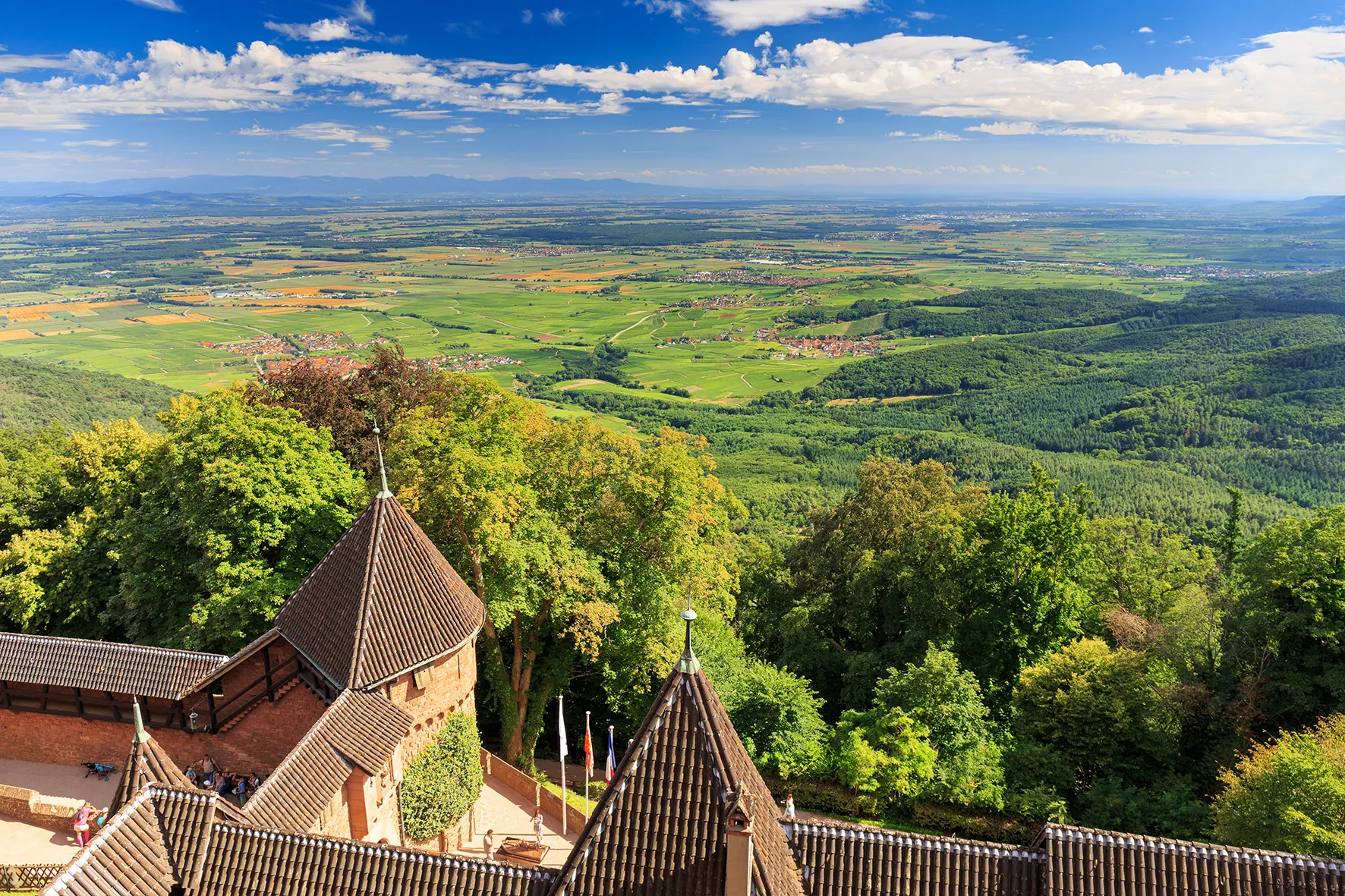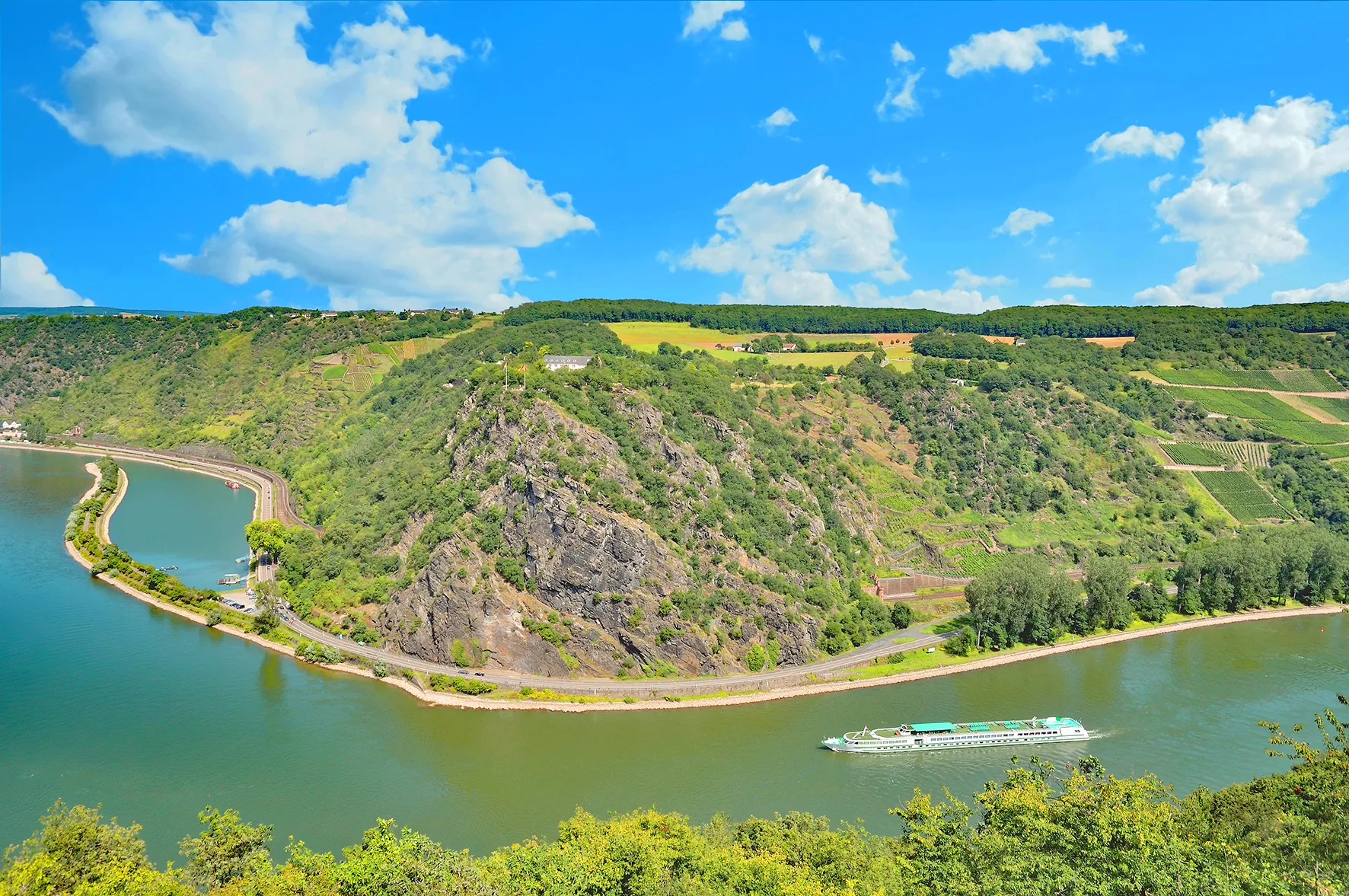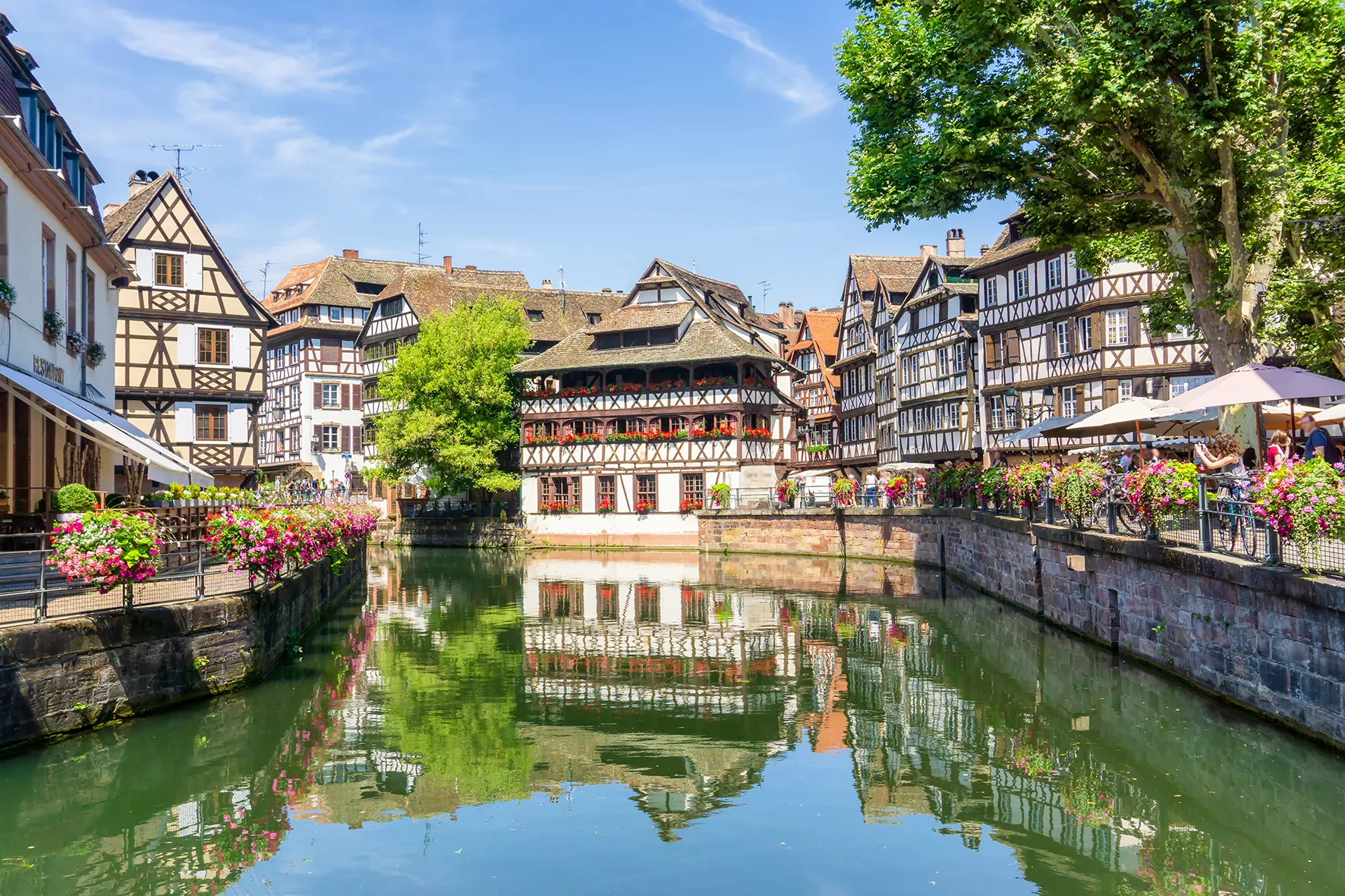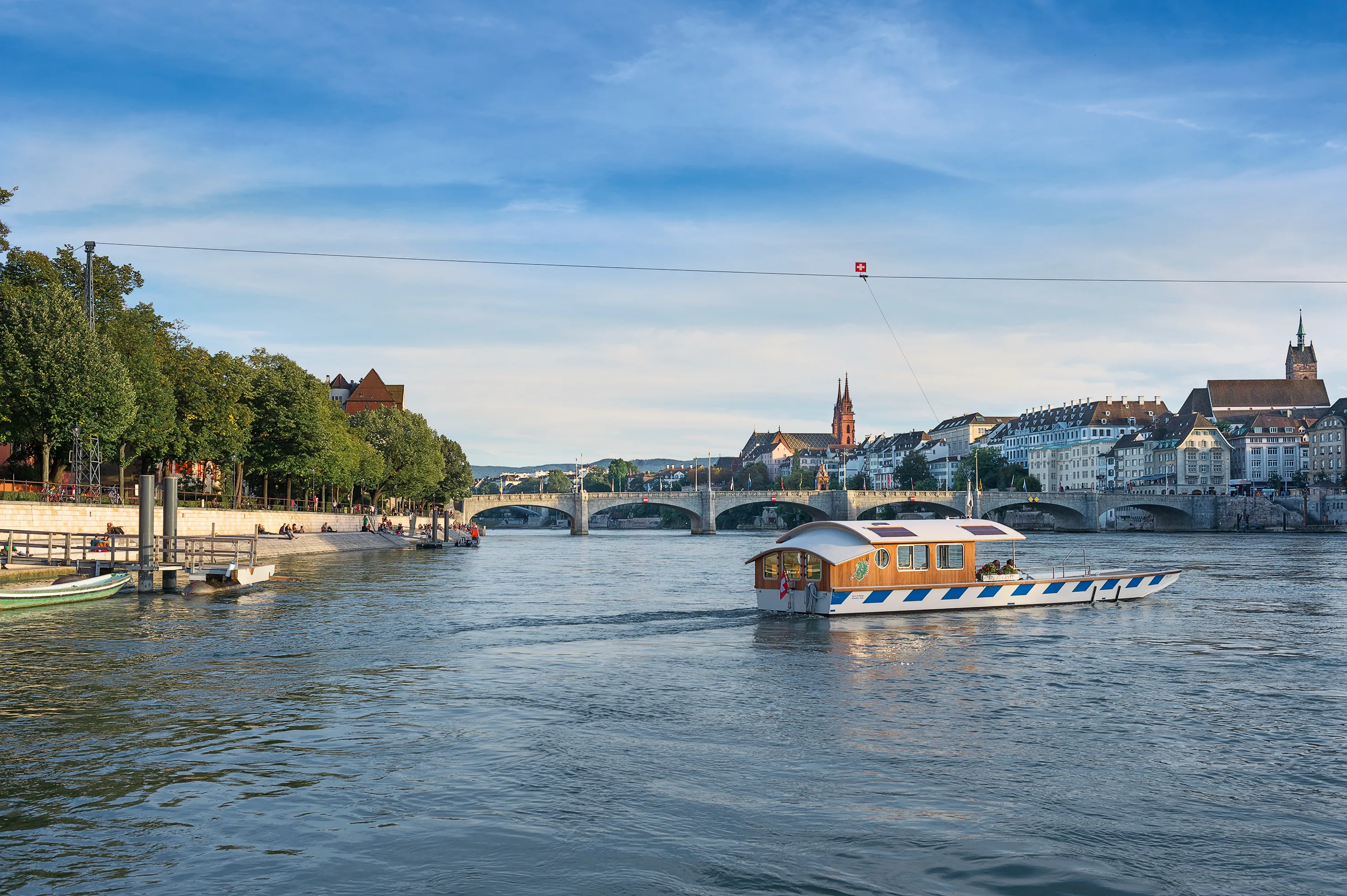- Home
The Rhine and its tributaries
The Rhine and its tributaries
The Rhine between Romance and Realism
The Rhine and its legendary romanticism ... The Rhine, historical river, first witness of the construction of the current European Union ... The Rhine, the first destination of our company when it was called Alsace Cruises. It was in 1976 and our founder Gérard Schmitter pioneered a new form of tourism in France. The Rhine remains today one of the key routes in our extensive programme. Around 40% of our clients, or about 53,000 passengers a sail on a Rhine cruise.

An international river
The Rhine is by definition an international river. It takes its source in the Alps, in the Swiss Grisons, and flows over 1350 kilometres further into the North Sea in, Holland (Netherlands), where it meets the waters of the Meuse before exploding into several estuaries. As the border river between Switzerland and Austria, between Switzerland and Germany, between France and Germany where it remains in Alsace for 180 kilometres, it separates the Vosges and Black Forest between Basle and Mainz. Its course then goes to Luxembourg and the Netherlands where it becomes broader and more powerful. The Rhine is the 29th longest river of the world after the Danube (2892 kilometres) and in front of the Loire (1010 kilometres). The river does not cross any city, it runs along them. This is the case in Karlsruhe, Mannheim, Mainz, Koblenz, Cologne, Düsseldorf and Strasbourg, which are the major Rhine ports and some of our outstanding stops.

Prudence in the romantic area
The Rhine is the busiest waterway in Europe and arguably the most modern one today. It is possible to sail 883 kilometres from its origin in Basel. It is governed by the Mannheim Convention signed in 1868 between France, the Grand Duchy of Baden, Bavaria, the Grand Duchy of Hesse, the Netherlands and Prussia. In Strasbourg, a Central Commission of the Rhine, ensures the free passage on this "international waterway" navigable by boats and ships measuring up to 3000 tons. There is no major difficulty in navigating this important economic axis of Western Europe, certifies Admiral Franck Fiorillo. It is only recommended to keep a watchful eye on traffic, that tends to be very dense on the navigable channel. Be prepared also to be defied by the famous Lorelei, a legendary mermaid perched on her rock, which inspired deeply Guillaume Apollinaire: "At Bacharach, there was a fair witch who made all the men die of love in the round... "So be careful in the romantic part of the Rhine where blankets of fog can be a source of accidents. But the sorcerer does not illuminate the Rhine alone! There are also the vines that make the Rhine drunk where they are placed in its waters, always according to Apollinaire and the castles! No less than thirty “burgs" are located over a distance of 60 kilometres between Koblenz and Mainz. Among others, the fortress of Ehrenfels, the Mouse Tower, the castle of Stahleck and the impressive Pfalzgrafenstein castle, just after the Lorelei, which stands like a stone ship in the middle of the waves.

Between war and peace
The Rhine is a delight for the boatmen as well as for the passengers of our cruises, always in love with this river that has seen so much over the centuries. It has kept track of the valiant soldiers of the Revolution. The small Petersberg Cemetery, just before Koblenz, pays tribute to them. While Kellermann triumphed at Valmy, the revolutionary armies advanced into the Rhine valley. Thus, one evening in April 1792, in Strasbourg, Rouget de Lisle, garrison lieutenant, composed the war song of the army of the Rhine that became the Marseillaise. After several bloody conflicts, the Rhine witnessed the first act of Franco-German reconciliation that led to the construction of the United Europe of today. Charles De Gaulle and Konrad Adenauer made it the symbol of a future under the sign of peace.

Sailing in clear waters
Its waters are so clear that salmon, which disappeared for a time, have come back again showing the river is in good health. From the 1970s, the Rhine was one of the most disgusting cesspools in Europe. Invaded by waste and sewage from cities, the chemical industry, potash mines. Overloaded with heavy metals and harmful substances, salt, agricultural fertilizers, the water had become unfit for consumption and fatal for the aquatic fauna. The river again suffered in 1986 from the fire of the chemical plant Sandoz near Basel: insecticides and pesticides were dumped into the river with water that was used to control the disaster. This ecological disaster finally mobilized the riparian states. Thanks to their combined efforts, the Rhine is gradually becoming a clean river. CroisiEurope opened the way of river tourism on this mythical river. It all started with Alsace I, the first used ship acquired to go to Lauterbourg, for lunch and dancing for a day, then to Rudesheim for a crazy night. In the 80s arrived the first cabin ships: Little France, Hansi, Kléber ... and finally Kellermann and all the others in a cleaner construction since Liberty, more and more chic, more and more comfortable, to celebrate the unique beauty of this river (and its tributaries), as did poets from both shores, beyond all fratricidal wars.

